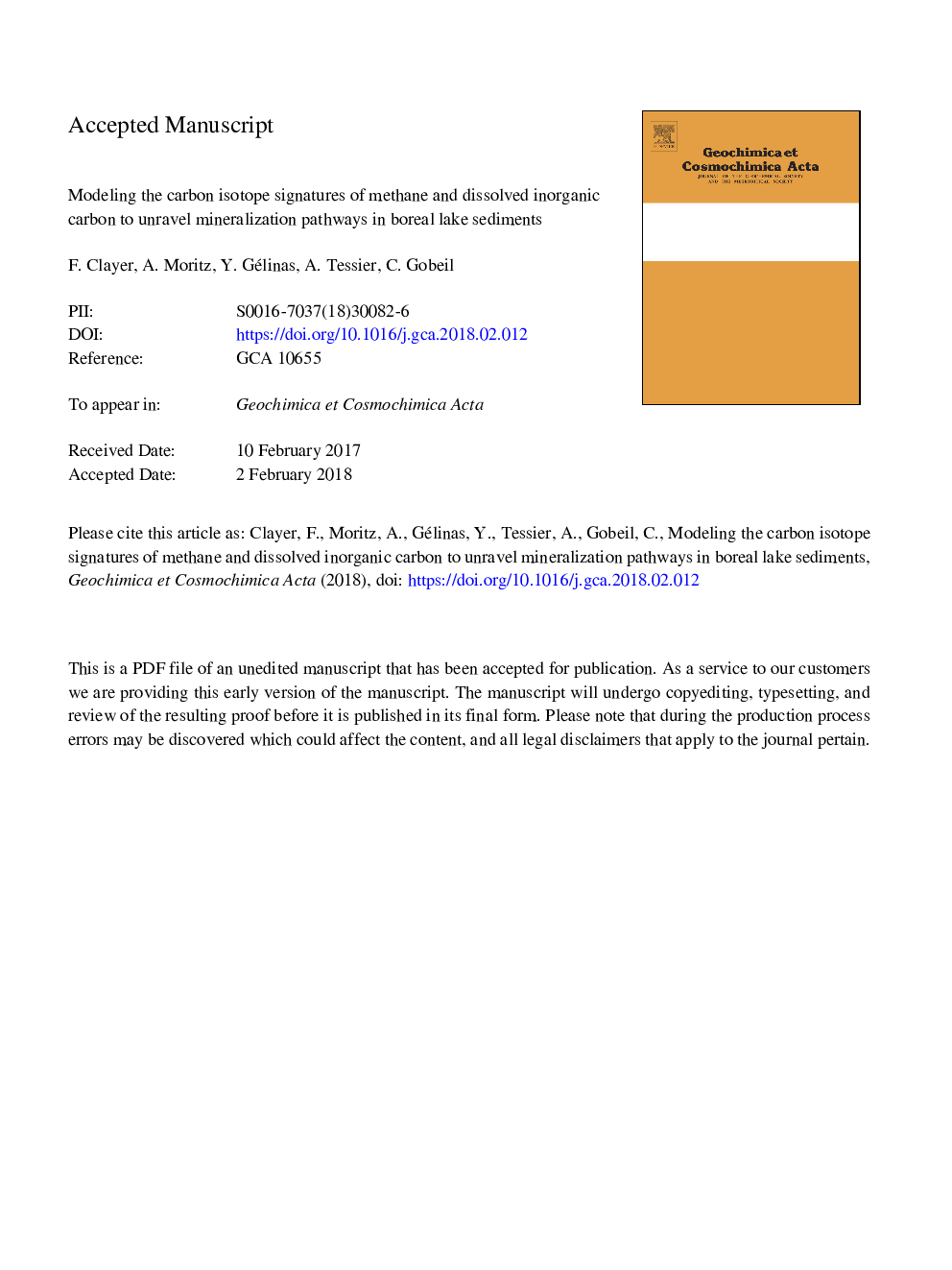| کد مقاله | کد نشریه | سال انتشار | مقاله انگلیسی | نسخه تمام متن |
|---|---|---|---|---|
| 8910770 | 1637928 | 2018 | 54 صفحه PDF | دانلود رایگان |
عنوان انگلیسی مقاله ISI
Modeling the carbon isotope signatures of methane and dissolved inorganic carbon to unravel mineralization pathways in boreal lake sediments
ترجمه فارسی عنوان
مدل سازی امضاهای ایزوتوپ کربن متان و کربن غیرمجاز حل شده برای ردیابی مسیرهای کانی سازی در رسوبات دریاچه بئرال
دانلود مقاله + سفارش ترجمه
دانلود مقاله ISI انگلیسی
رایگان برای ایرانیان
کلمات کلیدی
متان، کانی سازی مواد آلی، مدلسازی واکنش-حمل و نقل، ایزوتوپهای کربن، دریاچه نئورال، رسوب رسوبی، دیانژن اولیه،
موضوعات مرتبط
مهندسی و علوم پایه
علوم زمین و سیارات
ژئوشیمی و پترولوژی
چکیده انگلیسی
Vertical profiles of the concentration and isotopic composition (δ13C) of methane (CH4) and dissolved inorganic carbon (DIC), as well as of ancillary parameters, were obtained in the top 25â¯cm of a sediment column in a seasonally anoxic basin from an oligotrophic boreal lake. Modeling the profiles of CH4 and DIC concentrations and those of their δ13C signatures with reaction-transport equations allowed us to determine the organic matter (OM) degradation rates according to various reactions and to constrain the in situ isotopic fractionation factors and diffusivity coefficients of CH4 and DIC. This exercise reveals inter alia that (i) CH4 production occurs below a depth of 5â¯cm, with the highest production rate between 5 and 7.5â¯cm depth, (ii) all CH4 is produced through hydrogenotrophy, and (iii) methanogenesis yields a production rate of CH4 about three times greater than that of DIC. This latter observation indicates either that fermentation of OM is not the exclusive source of H2 sustaining hydrogenotrophy, or that the commonly assumed model molecule CH2O does not adequately represent the fermenting OM, since its fermentation yields identical rates of CH4 and DIC production. The porewater profiles of Fe and SO42- suggest that some H2 may be produced during the reoxidation of reduced sulfur by Fe(III), but the rate of H2 production via this process, if active, would be insignificant in comparison to that required to sustain the estimated rate of hydrogenotrophy. We deduce that the imbalance between CH4 and DIC production rates is rather due to the fermentation of organic substrates that are more reduced than CH2O, i.e., having a negative average carbon oxidation state (COS). From the constraints on reaction rates and on fermentation pathways imposed by the δ13C data, we infer that the organic substrate fermenting between depths of 5 and 7.5â¯cm should have a COS of â1.87. We thus submit that CH4 is produced in the sediments of the seasonally anoxic basin of our boreal lake through hydrogenotrophy coupled to the fermentation of reduced organic substrates that can be represented by a mixture of fatty acids (e.g. C16H32O2; COS of â1.75) and fatty alcohols (e.g., C16H34O; COS of â2.00). This study emphasizes the importance of characterizing the sedimentary OM undergoing mineralization in order to improve diagenetic model predictions of CH4 cycling in boreal lakes and of its significance in climate change.
ناشر
Database: Elsevier - ScienceDirect (ساینس دایرکت)
Journal: Geochimica et Cosmochimica Acta - Volume 229, 15 May 2018, Pages 36-52
Journal: Geochimica et Cosmochimica Acta - Volume 229, 15 May 2018, Pages 36-52
نویسندگان
F. Clayer, A. Moritz, Y. Gélinas, A. Tessier, C. Gobeil,
